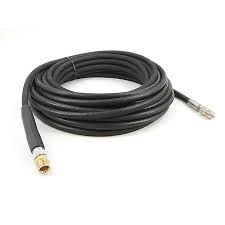Replacement Ford Power Steering Hose for Enhanced Vehicle Performance and Reliability
Understanding Ford Power Steering Hose Importance, Maintenance, and Replacement
The power steering system in any vehicle, including Ford models, is crucial for providing the driver with ease of steering and handling. One key component of this system is the power steering hose, which is responsible for transporting hydraulic fluid from the pump to the steering mechanism. In this article, we will delve into the function of the power steering hose, its importance, and how to maintain and replace it when necessary.
What is the Power Steering Hose?
The power steering hose is a vital part of the hydraulic steering system. It is typically made of a high-pressure rubber or reinforced material designed to withstand the significant pressures from the hydraulic fluid. In Ford vehicles, there can be different types of hoses, including high-pressure hoses that connect the pump to the steering gear and low-pressure return hoses that carry the fluid back to the reservoir. Proper function of these hoses ensures that the steering system operates smoothly and effectively.
Importance of the Power Steering Hose
The primary function of the power steering hose is to transfer hydraulic fluid. This fluid creates force that helps the driver turn the steering wheel with minimal effort. If the hoses are compromised—due to wear, corrosion, or leaks—the entire steering system can experience diminished performance. Signs of a failing power steering hose can include
1. Fluid Leaks If you notice fluid pooling under your vehicle, it could indicate that the power steering hose is damaged. 2. Steering Difficulty If you encounter stiffness in the steering wheel or find it difficult to maneuver the vehicle, it may be due to a malfunctioning hose. 3. Unusual Noises Whining or groaning noises when you turn the steering wheel can signal low fluid levels due to a leak in the hose.
Maintenance of the Power Steering Hose
Regular maintenance of the power steering system is essential for the longevity and performance of your Ford vehicle. Here are some tips to keep the power steering hose in good condition
- Routine Inspections Regularly check for signs of wear and tear, such as cracks, abrasions, or bulges in the hose. It is important to inspect both high-pressure and low-pressure hoses. - Fluid Check Monitor the level and condition of the power steering fluid. If the fluid appears dark or contains debris, it is a sign that the system may need flushing. - Professional Servicing Have a qualified mechanic inspect the power steering system during routine maintenance checks. They can identify potential issues before they become major problems.
ford power steering hose

Replacing the Power Steering Hose
If you discover that the power steering hose is damaged or leaking, replacement is necessary to restore proper function. Here’s a streamlined process for replacing the power steering hose
1. Purchase the Correct Hose Ensure you purchase a high-quality replacement hose that is compatible with your specific Ford model. Genuine Ford parts are recommended for optimal performance. 2. Prepare the Vehicle Elevate the front of the vehicle using jacks and secure it with jack stands. Ensure that the engine is off and cool before starting the work.
3. Drain the Fluid Using a drain pan, remove the power steering fluid from the reservoir and the system to prevent any mess while replacing the hose.
4. Disconnect the Old Hose Use appropriate tools to unfasten the fittings that connect the hose to the pump and the steering gear. Be cautious of any residual fluid that may spill.
5. Install the New Hose Connect the new hose, ensuring a secure fit. It is crucial to avoid cross-threading the fittings.
6. Re-fill and Bleed the System After securing the new hose, refill the power steering fluid, and start the engine. Turn the steering wheel from lock to lock to bleed any air out of the system.
7. Check for Leaks After installation, check around the hose and connections for any signs of leaks.
Conclusion
The power steering hose might seem like a small component of your Ford vehicle, but it plays a pivotal role in delivering smooth and safe driving experiences. Regular maintenance, timely inspections, and knowing how to replace the hose can keep your power steering system in optimal condition, ensuring you remain in control on the road. Remember, when in doubt, consult with a professional mechanic who can provide assistance and ensure safety and reliability in your vehicle’s performance.
-
Ultimate Spiral Protection for Hoses & CablesNewsJun.26,2025
-
The Ultimate Quick-Connect Solutions for Every NeedNewsJun.26,2025
-
SAE J1401 Brake Hose: Reliable Choice for Safe BrakingNewsJun.26,2025
-
Reliable J2064 A/C Hoses for Real-World Cooling NeedsNewsJun.26,2025
-
Heavy-Duty Sewer Jetting Hoses Built to LastNewsJun.26,2025
-
Fix Power Steering Tube Leaks Fast – Durable & Affordable SolutionNewsJun.26,2025

